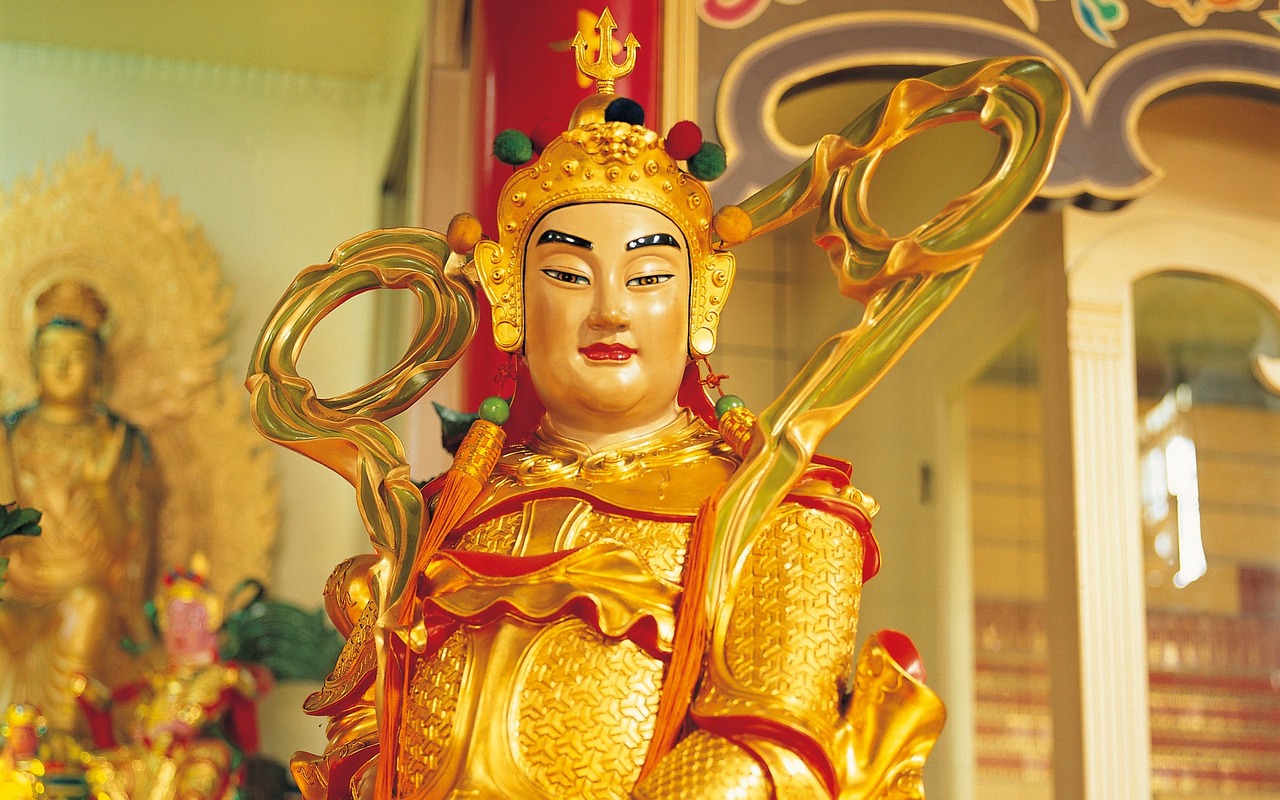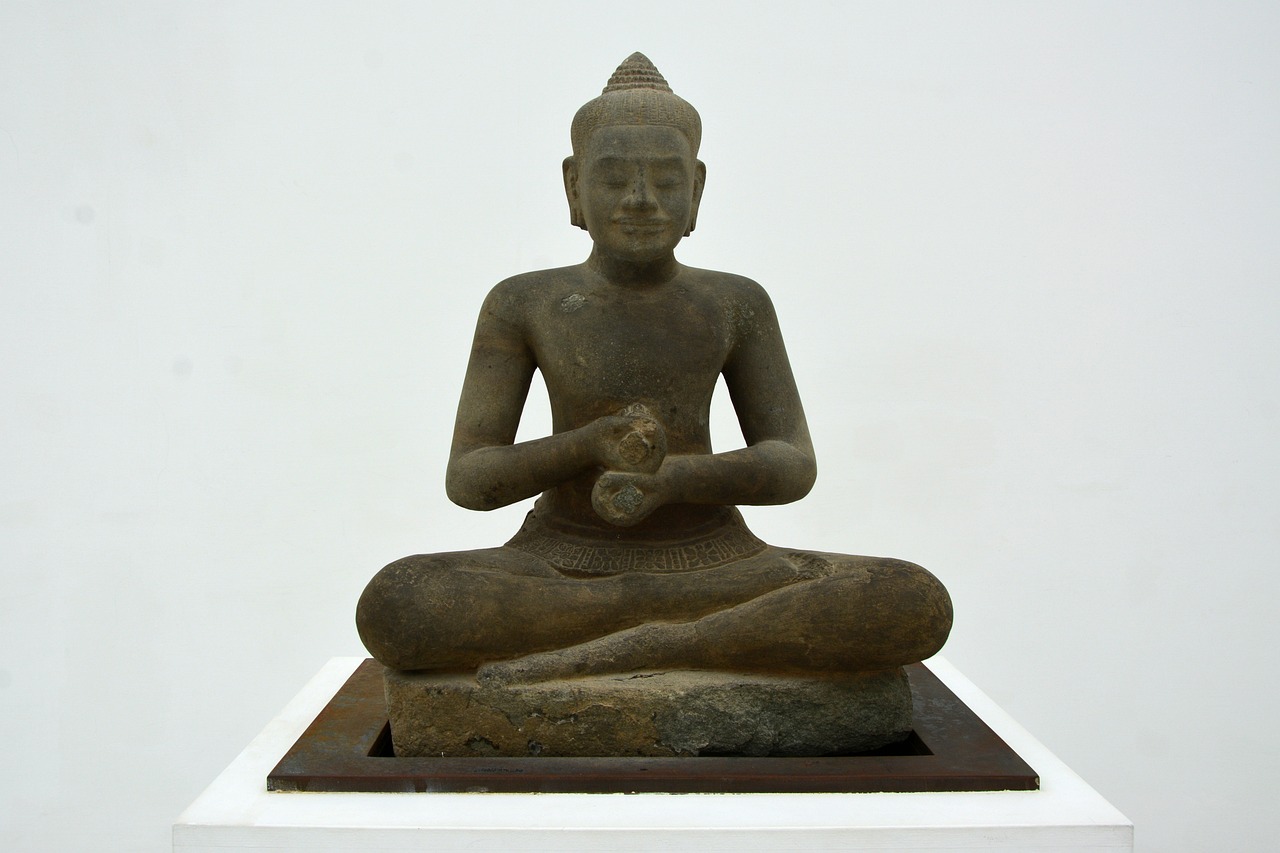Exploring the Art of Ancient Civilizations
When delving into the art of ancient civilizations, we embark on a fascinating journey through time, exploring the diverse and intricate artistic expressions that have shaped human history. From the majestic pyramids of Egypt to the intricate pottery of the Indus Valley civilization, each ancient culture has left behind a rich legacy of art that reflects their beliefs, values, and way of life.
Ancient Egyptian art stands out for its iconic symbols and representations, such as hieroglyphics, sculptures, and paintings. These artistic forms not only served as decorative elements but also held deep religious and cultural significance, offering insights into the beliefs and rituals of the ancient Egyptians.
In contrast, Greek and Roman art exuded a sense of realism and idealism, often depicting mythological themes and heroic figures. The classical art of these civilizations celebrated the human form and explored concepts of beauty, balance, and harmony, influencing artistic traditions for centuries to come.
Mayan art and architecture, on the other hand, showcased the advanced knowledge and skills of this ancient civilization in mathematics and astronomy. The intricate designs of their buildings and sculptures reveal a deep connection to the cosmos and a sophisticated understanding of architectural principles.
Chinese dynasties, known for their diverse artistic styles, excelled in various forms of art, from calligraphy and painting to ceramics and jade carvings. Each dynasty brought its unique flair to the artistic scene, leaving behind a rich legacy of creativity and innovation.
The art of the Indus Valley civilization offers a glimpse into their urban planning and trade networks through unique pottery, seals, and sculptures. These artifacts not only showcase the craftsmanship of the civilization but also provide valuable insights into their economic and social structures.
African tribal art is a vibrant tapestry of cultural traditions and spiritual beliefs, expressed through colorful masks, sculptures, and textiles. Each piece of art carries deep symbolic meaning, reflecting the rich heritage and diversity of African tribes.
The symbolic artistry of the Aztec and Inca empires is characterized by intricate goldwork, textiles, and architecture honoring their deities and rulers. These artistic expressions served as a form of worship and tribute, blending artistic skill with religious devotion.
Unearthing the ancient artifacts of Mesopotamia reveals a glimpse into the daily life and religious practices of this ancient civilization. From cylinder seals to monumental sculptures and cuneiform tablets, each artifact tells a story of a bygone era, offering valuable insights into the cultural and social fabric of Mesopotamian society.

Ancient Egyptian Art
Delve into the artistic expressions of past societies, uncovering their cultural significance and historical context.
Ancient Egyptian art stands as a testament to the rich and mystical world of one of the most iconic civilizations in history. The art of ancient Egypt is renowned for its intricate hieroglyphics, majestic sculptures, and vibrant paintings that offer a glimpse into the beliefs, rituals, and daily life of this ancient culture.
The hieroglyphics, a form of writing using pictorial symbols, were not just a means of communication but also held sacred meanings, often depicting stories of gods, pharaohs, and the afterlife. These intricate symbols adorned the walls of temples, tombs, and monuments, preserving the history and religious beliefs of the Egyptians for eternity.
Ancient Egyptian sculptures, characterized by their monumental size and symbolic representations, were crafted with meticulous detail to honor the pharaohs, gods, and goddesses. The statues of pharaohs often depicted them in a divine light, showcasing their power and authority in the afterlife.
Paintings in ancient Egypt were not just decorative but served a deeper purpose, illustrating scenes from daily life, religious ceremonies, and mythological tales. The use of vibrant colors and detailed compositions brought these scenes to life, offering a visual narrative of the Egyptian worldview.

Greek and Roman Art
When it comes to exploring the art of ancient civilizations, one cannot overlook the rich and influential artistic traditions of the Greek and Roman civilizations. Both cultures have left a lasting impact on the art world, with their emphasis on realism, idealism, and mythological themes.
The art of ancient Greece is renowned for its focus on portraying the human form with precision and grace. From the iconic sculptures of gods and goddesses to intricate pottery adorned with mythological scenes, Greek art reflects a deep appreciation for beauty and harmony.
On the other hand, Roman art built upon the foundations laid by the Greeks, incorporating elements of grandeur and power. The Romans excelled in creating lifelike portraits, intricate mosaics, and elaborate frescoes that adorned their public buildings and homes.
One of the most striking aspects of Greek and Roman art is the way in which it intertwined with mythology and religion. Mythological figures and stories served as inspiration for artists, allowing them to create works that not only showcased technical skill but also conveyed moral and philosophical messages.
Moreover, the art of ancient Greece and Rome was not limited to sculptures and paintings; it also encompassed architecture, with iconic structures such as the Parthenon in Athens and the Colosseum in Rome standing as testaments to their architectural prowess.
Overall, the art of ancient Greece and Rome continues to captivate and inspire audiences worldwide, serving as a testament to the enduring legacy of these remarkable civilizations.

Mayan Art and Architecture
Delve into the artistic expressions of past societies, uncovering their cultural significance and historical context.
The Mayan civilization is renowned for its intricate art and impressive architectural feats, showcasing their advanced knowledge in various fields. Mayan art is characterized by elaborate designs that often incorporate symbolic elements reflecting their beliefs and rituals. Their architecture, including towering pyramids and intricate palaces, demonstrates their engineering prowess and astronomical expertise.

Chinese Dynasties Art
Delve into the artistic expressions of past societies, uncovering their cultural significance and historical context.
The art of Chinese dynasties is a rich tapestry woven with diverse styles and techniques that have evolved over centuries. From the intricate brushwork of calligraphy to the delicate beauty of jade carvings, each dynasty has left its unique mark on the artistic landscape of China.
One of the most revered art forms in Chinese history is calligraphy, where skilled artists use brush and ink to create elegant characters that convey deep meanings and emotions. This ancient practice is not just about writing words but is seen as a form of artistic expression that reflects the writer's inner thoughts and feelings.
Painting is another cornerstone of Chinese art, with traditional landscapes and nature scenes being popular subjects. Artists often use symbolism and subtle brushstrokes to evoke a sense of harmony and balance in their work, reflecting the Taoist and Confucian principles that have shaped Chinese culture.
Ceramics hold a special place in Chinese art history, with each dynasty contributing unique styles and techniques to the craft. From the vibrant colors of the Tang dynasty to the delicate blue and white porcelain of the Ming dynasty, Chinese ceramics are prized for their beauty and craftsmanship.
Jade carving is another art form that has been highly esteemed in Chinese culture for millennia. Jade, known as the "stone of heaven," is believed to possess mystical properties and is carved into intricate designs symbolizing longevity, prosperity, and protection. These exquisite jade pieces showcase the skill and artistry of Chinese craftsmen throughout history.
Through the art of Chinese dynasties, we can glimpse into the soul of a civilization that valued beauty, harmony, and tradition. Each brushstroke, each carving, and each stroke of ink tells a story of a culture that has stood the test of time, leaving a lasting legacy that continues to inspire and captivate art lovers around the world.

Indus Valley Civilization Art
The art of the Indus Valley Civilization offers a fascinating glimpse into the ancient culture and creativity of this enigmatic society. Known for its advanced urban planning and sophisticated trade networks, the art of the Indus Valley civilization reflects their ingenuity and artistic prowess. One of the most notable forms of art from this period is their unique pottery, characterized by intricate designs and skilled craftsmanship. These pottery pieces not only served practical purposes but also showcased the aesthetic sensibilities of the Indus Valley people.
In addition to pottery, the Indus Valley civilization is also renowned for its seals, which were intricately carved with symbols and motifs. These seals played a crucial role in trade and administrative activities, indicating the high level of organization and communication within the society. The artistry displayed on these seals provides valuable insights into the religious and cultural beliefs of the Indus Valley people, offering a window into their worldview and symbolism.
Furthermore, sculptures from the Indus Valley civilization exhibit a remarkable attention to detail and artistic skill. The sculptures often depict human figures in various poses, reflecting the daily life and activities of the ancient inhabitants. These sculptures not only serve as artistic expressions but also serve as historical records, preserving moments of the past for future generations to study and appreciate.
One intriguing aspect of the art from the Indus Valley civilization is the absence of large-scale monumental architecture, unlike other contemporary civilizations. This unique characteristic has sparked debates among historians and archaeologists, prompting questions about the social structure and priorities of the Indus Valley society. Despite the lack of grand architectural structures, the art of the Indus Valley civilization remains a testament to their creativity, innovation, and cultural sophistication.

African Tribal Art
Delve into the artistic expressions of past societies, uncovering their cultural significance and historical context.
African tribal art is a vibrant reflection of the diverse cultures and traditions of the continent's indigenous tribes. Through intricate masks, sculptures, and textiles, African tribes communicate their rich heritage, spiritual beliefs, and social structures. These artistic creations serve as visual narratives, telling stories of ancestral wisdom, rituals, and community bonds.
The use of bold colors, geometric patterns, and symbolic motifs in African tribal art showcases the deep connection between art and daily life. Each piece carries layers of meaning, representing aspects of nature, spirituality, and the human experience. The craftsmanship and attention to detail in these artworks highlight the skill and creativity of the artisans, passed down through generations.
Moreover, African tribal art plays a crucial role in preserving cultural identity and fostering a sense of belonging within communities. These art forms are not just decorative but serve as tools for communication, education, and spiritual expression. They embody the essence of African traditions, values, and worldviews, transcending time and borders.
Exploring African tribal art offers a glimpse into the soul of the continent, where creativity intertwines with history, mythology, and daily rituals. It invites us to appreciate the beauty and complexity of African cultures, inviting us to embrace diversity and celebrate the artistic legacy of indigenous tribes.

Aztec and Inca Art
When delving into the art of the Aztec and Inca civilizations, one is immediately struck by the intricate and symbolic nature of their artistic expressions. Both empires placed a strong emphasis on honoring their deities and rulers through their art, creating masterpieces that reflected their rich cultural and spiritual beliefs.
The Aztecs, known for their advanced goldwork and intricate textiles, used these materials to create stunning pieces that showcased their reverence for their gods. Their art often depicted mythological stories and rituals, providing a window into their religious practices and worldview.
On the other hand, the Inca civilization excelled in architecture, creating impressive structures such as Machu Picchu that still stand as testaments to their engineering prowess. Their art incorporated intricate patterns and designs, often using vibrant colors to represent the natural world and their connection to it.
Both the Aztecs and the Incas utilized art as a means of communication, storytelling, and worship, leaving behind a legacy that continues to captivate and inspire us today. By studying their art, we gain valuable insights into the beliefs, values, and daily life of these ancient civilizations.

Mesopotamian Artifacts
Delve into the artistic expressions of past societies, uncovering their cultural significance and historical context.
When we talk about Mesopotamian artifacts, we are transported back in time to the cradle of civilization, where the ancient Mesopotamian people left behind a treasure trove of artistic creations that provide a glimpse into their daily lives and religious beliefs. Among the notable artifacts are the intricate cylinder seals, which were used for marking documents and objects with unique designs that often depicted scenes of mythology and rituals. These seals not only served a practical purpose but also held symbolic meaning, reflecting the Mesopotamians' worldview and spiritual practices.
Another fascinating aspect of Mesopotamian art is the monumental sculptures that adorned temples and palaces, showcasing the skill and craftsmanship of the ancient artists. These sculptures, often depicting gods, rulers, and mythical creatures, were not only decorative but also served a religious and political function, conveying power and divine authority. The detailed carvings and inscriptions on these sculptures provide valuable insights into the beliefs and customs of the Mesopotamian society.
Moreover, the cuneiform tablets found in Mesopotamia are essential artifacts that have unlocked the secrets of this ancient civilization. These clay tablets, inscribed with wedge-shaped characters, contain a wealth of information ranging from administrative records and legal documents to literary works and religious texts. The decipherment of cuneiform script has revolutionized our understanding of Mesopotamian culture, allowing us to reconstruct their history and societal structure.
Overall, Mesopotamian artifacts offer a window into the past, enabling us to appreciate the creativity, ingenuity, and spiritual beliefs of one of the earliest civilizations in human history.
- What is the significance of Mesopotamian art? Mesopotamian art holds immense historical and cultural significance as it provides valuable insights into the beliefs, practices, and daily life of the ancient Mesopotamian people.
- How were cuneiform tablets deciphered? The decipherment of cuneiform script was a complex process that involved the efforts of scholars over centuries, with key breakthroughs made in the 19th century by individuals such as Henry Rawlinson.
- What role did cylinder seals play in Mesopotamian society? Cylinder seals were essential tools used for marking and sealing documents and objects, serving both practical and symbolic purposes in Mesopotamian society.
- What themes are commonly depicted in Mesopotamian art? Mesopotamian art often features religious motifs, mythological scenes, depictions of rulers and deities, as well as everyday life activities, providing a comprehensive view of their cultural and spiritual beliefs.
Frequently Asked Questions
- What is the significance of ancient Egyptian hieroglyphics?
Ancient Egyptian hieroglyphics were a form of writing that conveyed both language and symbolism. They were used in religious texts, tombs, and monuments to communicate stories, beliefs, and historical events.
- What materials were commonly used in Greek and Roman sculptures?
Greek and Roman sculptures were typically crafted from marble, limestone, or bronze. These materials allowed artists to create detailed and lifelike representations of human figures and mythological beings.
- How did Mayan architecture reflect their advanced knowledge?
Mayan architecture showcased intricate designs and precise mathematical calculations. Structures like pyramids and temples aligned with celestial events, demonstrating the Mayan's expertise in astronomy and urban planning.
- What themes were prominent in Chinese dynasties' art?
Chinese dynasties' art often featured themes of nature, spirituality, and historical events. Calligraphy, landscape painting, and jade carvings were popular forms of artistic expression that reflected these themes.
- What is unique about African tribal art?
African tribal art is known for its vibrant colors, intricate patterns, and symbolic meanings. Masks, sculptures, and textiles were created to represent cultural traditions, spiritual beliefs, and social status within tribes.
- How did the Aztec and Inca civilizations honor their deities through art?
The Aztec and Inca civilizations used art to pay homage to their gods and rulers. Goldwork, textiles, and architectural structures were adorned with symbols and designs that represented the divine and showcased their power and authority.
- What role did cylinder seals play in Mesopotamian society?
Cylinder seals were used in Mesopotamia as a form of signature and authentication. These engraved cylinders were rolled onto clay or wax to seal documents, mark ownership, and provide protection against tampering.



















